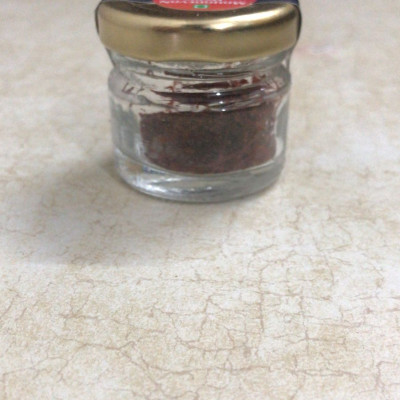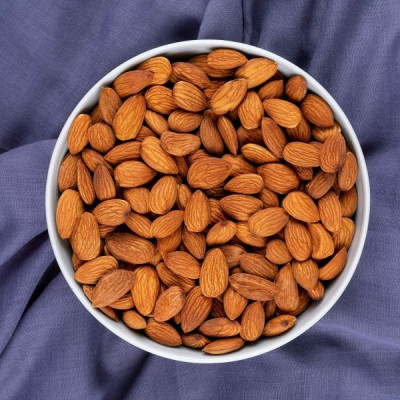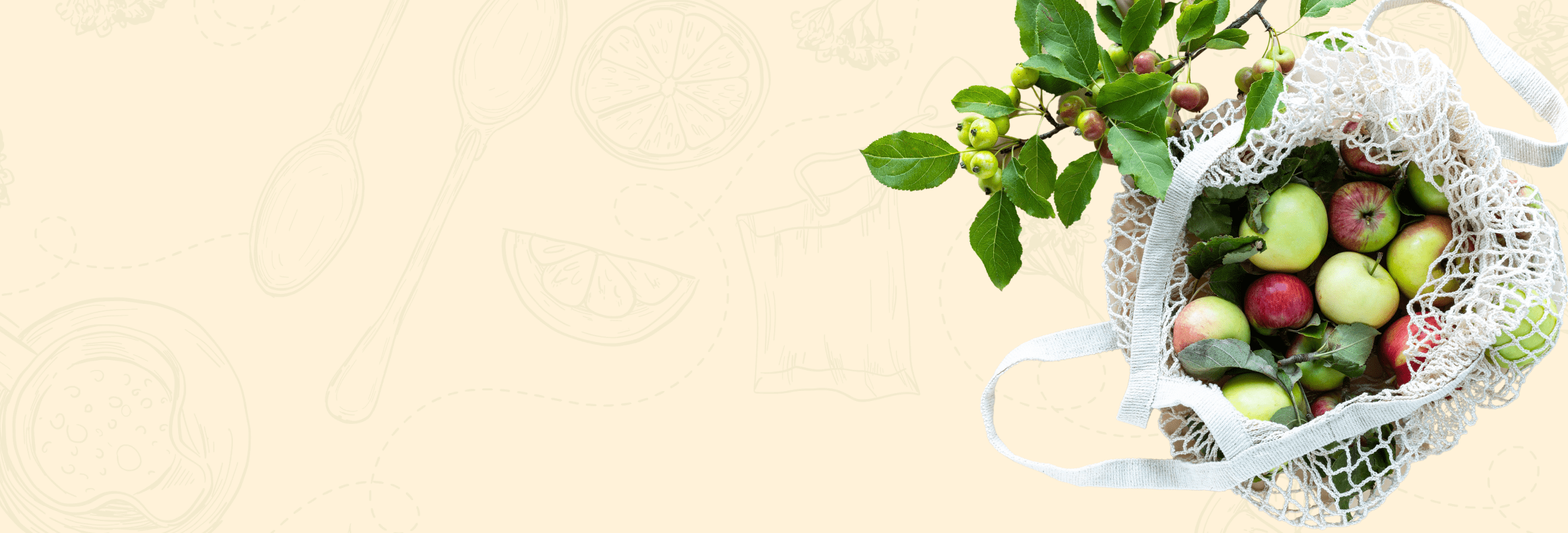Fruits
Mango Kesar: A Royal Delight - Unveiling the Golden Gem of Mangoes
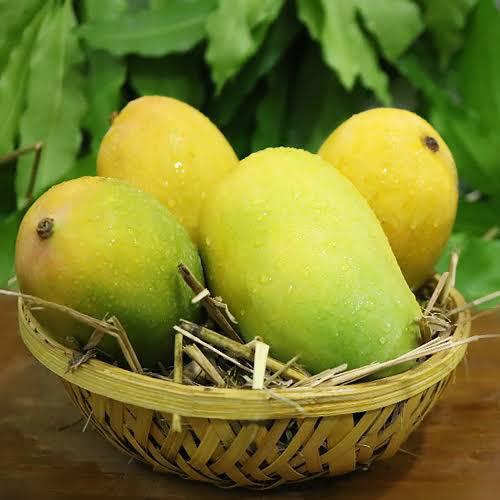
Mango Kesar: A Royal Delight
Introduction
- Welcome to the regal world of Mango Kesar, where flavor meets royalty. In this comprehensive article, we will explore the exquisite qualities, rich history, and unrivaled appeal of the Mango Kesar variety. Our aim is to provide you with a detailed understanding of this majestic mango and equip you with the knowledge to truly appreciate its grandeur.
ORIGINS AND REGIONS
Mango Kesar, also known as Gir Kesar, is a popular variety of mango that is primarily grown in the Gir region of Gujarat, India. Here is a detailed overview of the origin and regions associated with Mango Kesar:
Origin:
- Mango Kesar originated in the Gir forest region, located in the southern part of the Saurashtra peninsula in Gujarat, India.
Regions:
- Gir Forest Region: The Gir forest region is the main area where Mango Kesar is grown. It is located in the districts of Junagadh, Amreli, and Gir Somnath in Gujarat.
- Junagadh: Junagadh district is renowned for its Mango Kesar orchards and contributes significantly to the production of this variety.
- Amreli: Amreli district is another important region known for its Mango Kesar cultivation.
- Gir Somnath: Gir Somnath district is part of the Gir region and also contributes to the cultivation of Mango Kesar.
2. Saurashtra Peninsula: The Saurashtra Peninsula, encompassing the Gir region, is known for its unique climatic conditions that favor the growth of Mango Kesar.
- The peninsula's geographical location and proximity to the Arabian Sea create a suitable microclimate for Mango Kesar cultivation.
3. Gujarat: Mango Kesar is primarily cultivated in Gujarat, the western state of India. It holds significance in the state's agricultural economy and is widely cherished for its quality and flavor.
- Besides the Gir region, Mango Kesar cultivation can be found in other parts of Gujarat, albeit on a smaller scale.
Appearance of Mango Kesar:
- Shape: Mango Kesar has an oval to oblong shape, with a slight curve towards the stem end. It is typically larger than other mango varieties.
- Size: The size of Mango Kesar can vary, but it is generally medium to large in size, with an average weight ranging from 250 grams to 500 grams.
- Skin Texture: The skin of Mango Kesar is smooth and thin, making it easy to peel. It has a golden-yellow to orange color when fully ripe.
- Color: When fully ripe, Mango Kesar exhibits a vibrant golden yellow color with patches of light green or orange-red blush on the skin. The color intensifies as the mango matures.
- Fibers: Mango Kesar has minimal fibers, making it a preferred choice for those who enjoy a smooth and buttery texture.
- Pulp: The flesh of Mango Kesar is bright orange in color, indicating its ripeness. It is juicy, tender, and succulent, offering a delightful eating experience.
- Aroma: Mango Kesar is renowned for its aromatic fragrance, which is reminiscent of sweet tropical notes. The aroma intensifies as the mango ripens further.
- Seed: The central stone or seed of Mango Kesar is relatively large and flat, with a thin and fibrous layer surrounding it.
- Juice Content: Mango Kesar has a high juice content, contributing to its rich and luscious flavor.
Flavor of Mango Kesar:
- Sweetness: Mango Kesar is celebrated for its exceptional sweetness. It offers a perfect balance of natural sugars, delivering a delightful sweetness that is not overly cloying.
- Aromatic Notes: Mango Kesar is known for its distinct aroma, which is often described as a blend of sweet tropical fragrances. The aroma intensifies as the mango ripens, enhancing the overall sensory experience.
- Tanginess: Alongside its sweetness, Mango Kesar exhibits a subtle tanginess that adds depth and complexity to its flavor profile. This tanginess provides a pleasant contrast and helps to balance the overall taste.
- Richness: The flavor of Mango Kesar is often described as rich and indulgent. Its luscious and creamy texture, combined with the natural sweetness and tanginess, creates a truly decadent mango experience.
- Tropical Essence: Mango Kesar captures the essence of tropical flavors, evoking thoughts of sun-kissed beaches and exotic destinations. Its flavor transports you to a tropical paradise, making it a favorite among mango enthusiasts.
- Floral Undertones: Some connoisseurs note subtle floral undertones in the flavor of Mango Kesar, adding an additional layer of complexity and elegance.
- Buttery Smoothness: The flesh of Mango Kesar has a smooth and buttery texture, which enhances the overall mouthfeel and contributes to its luxurious flavor experience.
- Intensity: Mango Kesar delivers a robust and intense flavor that can be savored with every bite. Its flavor profile is distinctive and memorable, leaving a lasting impression.
Versatility of Mango Kesar:
- Culinary Uses: Mango Kesar is incredibly versatile in the kitchen and can be enjoyed in various culinary creations. It is commonly used in desserts like mango ice cream, mango sorbet, puddings, and smoothies. The sweet and tangy flavor of Mango Kesar also complements savory dishes, such as mango salsas, chutneys, and salads.
- Beverages: Mango Kesar is a popular choice for making refreshing beverages. It can be blended into luscious mango lassis, tropical fruit juices, cocktails, and mocktails. The rich and aromatic flavor of Mango Kesar adds a delightful twist to any drink.
- Preserves and Jams: The sweetness and flavor of Mango Kesar make it an excellent candidate for making preserves, jams, and fruit spreads. The mango's natural sweetness, combined with its tanginess, creates a delectable spread that can be enjoyed on toast, pancakes, or as a topping for yogurt and desserts.
- Pickles: Mango Kesar is often used to make tangy and spicy pickles, adding a burst of flavor to meals. The firm texture of the mango holds up well in the pickling process, resulting in a delectable accompaniment to Indian meals and snacks.
- Fusion Cuisine: Mango Kesar's unique flavor profile makes it an ideal ingredient for fusion cuisine. It can be incorporated into dishes like mango-infused curries, mango-glazed meats, and mango-flavored sauces, adding a touch of tropical sweetness and tang to diverse culinary creations.
- Dried Mango: Mango Kesar can be sliced and dried to make flavorful dried mango slices. These can be enjoyed as a healthy and convenient snack, added to trail mixes, or used in baking and cooking.
- Garnish and Decorations: The vibrant color and attractive appearance of Mango Kesar make it a popular choice for garnishing desserts, salads, and savory dishes. The slices or cubes of mango can add a visually appealing touch and enhance the overall presentation of the dish.
Nutritional benefits of Mango Kesar:
- Rich in Vitamins: Mango Kesar is a great source of vitamins, particularly vitamin C and vitamin A. Vitamin C helps boost the immune system and supports collagen production, while vitamin A is essential for maintaining healthy vision and skin.
- Dietary Fiber: Mango Kesar contains dietary fiber, which aids in digestion and helps regulate bowel movements. Including fiber in your diet can promote a healthy digestive system and contribute to overall gut health.
- Antioxidants: Mango Kesar is packed with antioxidants, such as beta-carotene and flavonoids. These antioxidants help protect the body against harmful free radicals, reducing the risk of chronic diseases and promoting overall health.
- Potassium: Mango Kesar is a good source of potassium, an important mineral that plays a vital role in maintaining heart health and regulating blood pressure. Consuming foods rich in potassium can support cardiovascular health.
- Natural Energy Boost: Mango Kesar provides a natural energy boost due to its carbohydrate content. It is a perfect snack to replenish energy levels during the day or after physical activity.
- Hydration: Mango Kesar has high water content, which can help keep the body hydrated and support optimal functioning.
- Eye Health: The presence of vitamin A and other antioxidants in Mango Kesar can contribute to maintaining healthy vision and eye health.
- Weight Management: Mango Kesar, when consumed in moderation as part of a balanced diet, can be a healthy addition to a weight management plan. It is low in fat and calories and provides a satisfyingly sweet alternative to processed desserts.
Health benefits of Mango Kesar:
- Boosts Immune System: Mango Kesar is rich in vitamin C, which helps strengthen the immune system and protect against common illnesses like colds and flu. It supports the production of white blood cells, which are essential for fighting off infections.
- Promotes Digestive Health: Mango Kesar contains dietary fiber, which aids in digestion and helps prevent constipation. It supports a healthy digestive system by promoting regular bowel movements and improving gut health.
- Supports Eye Health: Mango Kesar is a good source of vitamin A and antioxidants, which are essential for maintaining healthy eyesight. These nutrients help protect the eyes from damage caused by free radicals and reduce the risk of age-related macular degeneration.
- Enhances Skin Health: The antioxidants and vitamin C in Mango Kesar help promote healthy skin by combating oxidative stress and supporting collagen production. Regular consumption of Mango Kesar can contribute to a youthful complexion and overall skin health.
- Regulates Blood Pressure: Mango Kesar is low in sodium and high in potassium, making it beneficial for regulating blood pressure. Potassium helps balance the sodium levels in the body, promoting healthy blood pressure levels and reducing the risk of hypertension.
- Provides Antioxidant Protection: Mango Kesar is rich in antioxidants, including beta-carotene and phenolic compounds. These antioxidants help protect the body's cells from damage caused by free radicals, which can lead to chronic diseases such as cancer and heart disease.
- Supports Heart Health: The combination of fiber, potassium, and antioxidants in Mango Kesar contributes to heart health. It helps lower cholesterol levels, reduces the risk of cardiovascular diseases, and supports overall heart function.
- Boosts Energy Levels: Mango Kesar is a natural source of carbohydrates, providing a quick and healthy energy boost. It is an ideal snack for active individuals and can help replenish energy levels during physical activities.
Availability of Mango Kesar:
- Seasonal Fruit: Mango Kesar is a seasonal fruit, typically available during the summer months in India. The harvest season for Mango Kesar usually starts around April and extends until June or July, depending on weather conditions and the specific region of cultivation.
- Limited Availability: Mango Kesar is known for its limited availability, as it is cultivated in specific regions of Gujarat, such as Junagadh, Amreli, and Girnar. Due to its high demand and limited production, Mango Kesar can sometimes be challenging to find outside of India.
- Local Markets: In India, Mango Kesar is commonly available in local fruit markets, especially in the state of Gujarat. These markets are bustling with vendors offering fresh, ripe Mango Kesar during the peak season. Local farmers' markets and fruit stalls may also have Mango Kesar available for purchase.
- Online Platforms: With the rise of e-commerce, it is now possible to find Mango Kesar available for online purchase. Various online platforms and marketplaces may offer Mango Kesar during the harvest season, allowing people from different regions to enjoy this delectable fruit.
- Exported to Other Countries: While Mango Kesar is primarily consumed in India, it is also exported to various countries worldwide. The availability of Mango Kesar in international markets may vary, and it is recommended to check with local suppliers or specialty stores that import Indian mangoes.
- Regional Festivals: During the Mango Kesar season, some regions in Gujarat celebrate mango festivals to showcase and promote this unique mango variety. These festivals offer an opportunity for people to taste and purchase fresh Mango Kesar directly from the farmers.
Storage and shelf life of Mango Kesar:
- Ripening Stage: Mango Kesar is typically harvested when it is still slightly firm and green. It is best to allow the mangoes to ripen at room temperature until they reach the desired level of ripeness. This process usually takes 2-5 days.
- Storing Ripe Mangoes: Once Mango Kesar is ripe, it should be stored in the refrigerator to slow down the ripening process and extend its shelf life. Place the ripe mangoes in a perforated bag or wrapped in a paper towel to absorb excess moisture. This will help prevent them from becoming overly ripe or spoiling quickly.
- Shelf Life: When stored properly in the refrigerator, ripe Mango Kesar can typically stay fresh for 3-5 days. It is important to check the mangoes regularly for any signs of spoilage, such as mold or unusual odors. Use them within the recommended shelf life for the best quality and flavor.
- Freezing Mangoes: If you have a surplus of Mango Kesar or want to store them for a longer period, you can freeze the mango slices. Peel and cut the mangoes into desired sizes, place them in an airtight container or freezer bag, and freeze. Frozen mangoes can be stored for up to 6 months and used for smoothies, desserts, or other recipes.
- Tips for Storage: To ensure the best quality and taste of Mango Kesar, consider the following tips:
- Avoid storing mangoes near strong-smelling foods as they can absorb odors.
- Do not wash the mangoes until you are ready to consume them to prevent moisture buildup and spoilage.
- Handle mangoes gently to avoid bruising or damaging the fruit.
FAQ for Eating Kesar Mangoes:
Q1: How do I choose a ripe Kesar Mango?
A1: Look for a Kesar Mango that has a vibrant golden-yellow color with a slight blush on the skin. It should yield to gentle pressure when squeezed and emit a sweet aroma at the stem end. Avoid mangoes that are overly soft or have blemishes.
Q2: What is the best way to cut and eat a Kesar Mango?
A2: To cut a Kesar Mango, hold it upright and slice vertically along both sides of the flat pit. Then, score the flesh in a crisscross pattern without piercing the skin. Use a spoon to scoop out the cubed mango or peel the skin back and enjoy it directly.
Q3: Are Kesar Mangoes best enjoyed chilled or at room temperature?
A3: Kesar Mangoes can be enjoyed both chilled and at room temperature, depending on personal preference. Some people enjoy the refreshing taste of chilled mangoes, while others prefer the natural sweetness that develops when mangoes are kept at room temperature.
Q4: Can I eat Kesar Mangoes if I have a mango allergy?
A4: If you have a known mango allergy, it is advisable to consult with a medical professional before consuming Kesar Mangoes or any mango variety. Mangoes can cause allergic reactions in some individuals, so it's essential to exercise caution.
Q5: Are there any specific health benefits of eating Kesar Mangoes?
A5: Kesar Mangoes are a rich source of vitamins A and C, which are beneficial for the immune system and skin health. They also provide dietary fiber and antioxidants. However, individual health benefits may vary, and a balanced diet is always recommended.
Q6: Can Kesar Mangoes be used in smoothies and desserts?
A6: Absolutely! Kesar Mangoes are excellent for adding a tropical touch to smoothies, desserts, and other culinary creations. They blend well in smoothies, make delicious mango sorbets, and can be used in various desserts like mango puddings and mango ice creams.
Q7: How can I incorporate Kesar Mangoes into savory dishes?
A7: Kesar Mangoes can add a delightful touch to savory dishes. You can dice and include them in salsas, salads, or create mango chutneys that pair well with grilled meats, curries, or sandwiches. The sweet and tangy flavor of mangoes adds a unique twist to savory recipes.
Q8: Can I freeze Kesar Mangoes for later use?
A8: Yes, you can freeze Kesar Mangoes for later use. Peel and slice the mangoes, then store them in airtight containers or freezer bags. Frozen mangoes are great for making smoothies, sorbets, or using as a topping for yogurt or oatmeal.
Q9: Are Kesar Mangoes suitable for people with diabetes?
A9: People with diabetes should consume Kesar Mangoes in moderation due to their natural sugar content. It's advisable to consult with a healthcare professional or a registered dietitian for personalized guidance on incorporating mangoes into a diabetic meal plan.
Q10: What is the best way to enjoy the flavor of Kesar Mangoes?
A10: The best way to enjoy the flavor of Kesar Mangoes is to savor them in their natural form. Eat them fresh and let the juicy, sweet, and slightly tangy taste envelop your taste buds. It's a delightful experience that captures the essence of this tropical fruit.
Q: How can I export Mango Kesar?
A: To export Mango Kesar, you need to comply with the export regulations of your country and the importing country. This includes obtaining necessary permits, adhering to quality standards, and following proper packaging and labeling requirements.
Q: Which countries import Mango Kesar?
A: Mango Kesar is primarily exported to countries such as the United States, Canada, the United Kingdom, Middle Eastern countries (such as UAE, Saudi Arabia), European countries (such as Germany, Netherlands), and Asian countries (such as Singapore, Malaysia).
Q: What are the packaging requirements for exporting Mango Kesar?
A: The packaging requirements for exporting Mango Kesar vary depending on the destination country. Generally, it is advisable to use food-grade packaging materials, such as corrugated boxes or crates, to protect the fruit during transit. Proper cushioning and ventilation should also be provided to maintain the quality of the mangoes.
Q: What are the quality standards for Mango Kesar export?
A: Mango Kesar for export should meet certain quality standards, including factors such as maturity, size, appearance, taste, and absence of pests or diseases. The specific quality requirements may vary according to the importing country's regulations and the preferences of the buyers.
Q: Are there any certifications required for exporting Mango Kesar?
A: Depending on the destination country and buyer requirements, certifications such as GlobalG.A.P., HACCP, ISO, or organic certifications may be necessary. These certifications demonstrate compliance with international quality and safety standards.
Q: What is the best time to export Mango Kesar?
A: The best time to export Mango Kesar is during the peak harvest season, which generally falls between April and June. However, the exact timing may vary depending on the region of cultivation and the specific maturity requirements of the fruit for export.
Q: How can I find buyers for Mango Kesar export?
A: There are several ways to find buyers for Mango Kesar export, including participating in international trade fairs, connecting with importers through trade directories, using online marketplaces, or collaborating with export promotion agencies or industry associations.
Q: What are the transportation options for exporting Mango Kesar?
A: Mango Kesar can be transported via air, sea, or land. Airfreight is commonly used for faster delivery to distant markets, while sea freight is suitable for larger quantities and longer distances. It is important to ensure proper temperature control and handling during transportation to maintain the quality of the fruit.
Q: How should Mango Kesar be packed for shipping?
A: Mango Kesar should be packed in suitable packaging materials that provide protection and ventilation. Common packaging options include corrugated boxes, crates, or foam trays. It is important to ensure that the packaging is sturdy, can withstand transportation handling, and allows for proper airflow to maintain fruit quality.
Q: What is the best way to protect Mango Kesar during shipping?
A: To protect Mango Kesar during shipping, it is essential to use cushioning materials such as foam inserts, shredded paper, or bubble wrap. This helps prevent bruising or damage to the fruit. Additionally, proper stacking and securing of the packed mangoes in the shipping container can minimize movement and maintain their integrity.
Q: Can Mango Kesar be shipped internationally?
A: Yes, Mango Kesar can be shipped internationally. However, it is important to comply with the import regulations of the destination country, including phytosanitary requirements, packaging standards, and labeling guidelines. Proper documentation, such as export permits and certificates, may also be required.
Q: How should temperature control be managed during Mango Kesar shipping?
A: Temperature control is crucial to maintain the quality of Mango Kesar during shipping. Depending on the transit time and destination, options like refrigerated containers or cold storage facilities may be used to ensure the mangoes remain at the optimal temperature. Monitoring devices can also be employed to track and maintain the desired temperature range.
Q: What are the shipping methods available for Mango Kesar?
A: Mango Kesar can be shipped using various methods, including airfreight, sea freight, or land transportation. Airfreight is preferred for shorter transit times and perishable shipments, while sea freight is suitable for larger volumes and longer distances. Land transportation is commonly used for regional or neighboring country shipments.
Q: How long does it take to ship Mango Kesar?
A: The shipping time for Mango Kesar depends on the destination, transportation method, and other factors such as customs clearance. Airfreight shipments generally take a few days to a week, while sea freight can range from a few weeks to a month or more, depending on the distance and shipping route.
Q: What precautions should be taken for international Mango Kesar shipping?
A: For international Mango Kesar shipping, it is important to comply with international trade regulations, ensure proper documentation, and adhere to phytosanitary requirements. It is also crucial to work with experienced shipping agents or freight forwarders who specialize in perishable goods to ensure a smooth and hassle-free process.
Q: How can I track the shipment of Mango Kesar?
A: Shipment tracking can be done through various methods, including online tracking systems provided by shipping companies or logistics partners. These systems allow you to monitor the location and status of the Mango Kesar shipment throughout the transportation process.
Q: What is Mango Kesar?
A: Mango Kesar, also known as Kesar mango or Gir Kesar mango, is a variety of mango known for its distinct sweet flavor, rich aroma, and vibrant orange-yellow flesh. It is primarily grown in the region of Junagadh in Gujarat, India.
Q: What is the taste of Mango Kesar?
A: Mango Kesar is prized for its unique flavor, which is a delightful combination of sweetness and tanginess. It is often described as having a rich, aromatic, and tropical taste with hints of honey and citrus undertones.
Q: Where is Mango Kesar grown?
A: Mango Kesar is primarily grown in the region of Junagadh in the state of Gujarat, India. The favorable climate, fertile soil, and careful cultivation techniques in this region contribute to the superior quality and taste of Mango Kesar.
Q: What are the health benefits of Mango Kesar?
A: Mango Kesar is not only delicious but also packed with nutrients. It is a good source of vitamins, minerals, and dietary fiber. Mango Kesar is known to support digestion, boost immunity, promote healthy skin, and provide antioxidant properties.
Q: How do you choose a ripe Mango Kesar?
A: When choosing a ripe Mango Kesar, look for a fruity aroma, slightly soft texture when gently pressed, and vibrant orange-yellow skin. Avoid mangoes with wrinkled or blemished skin, as it may indicate overripeness or poor quality.
Q: How can Mango Kesar be enjoyed?
A: Mango Kesar can be enjoyed in various ways. It is often eaten fresh, sliced, or cubed. It can also be used in smoothies, salads, desserts, jams, and sauces. Additionally, Mango Kesar is a popular ingredient in traditional Indian dishes and beverages.
Q: Can Mango Kesar be shipped internationally?
A: Yes, Mango Kesar can be shipped internationally, but it is subject to import regulations and phytosanitary requirements of the destination country. Proper packaging, temperature control, and compliance with labeling and documentation guidelines are crucial for successful international shipments.
Q: How long is the Mango Kesar season?
A: The Mango Kesar season typically starts in April and extends until June or July, depending on the specific region and harvest time. It is during this period that Mango Kesar is available in abundance and at its peak flavor.
click the below links to place an order

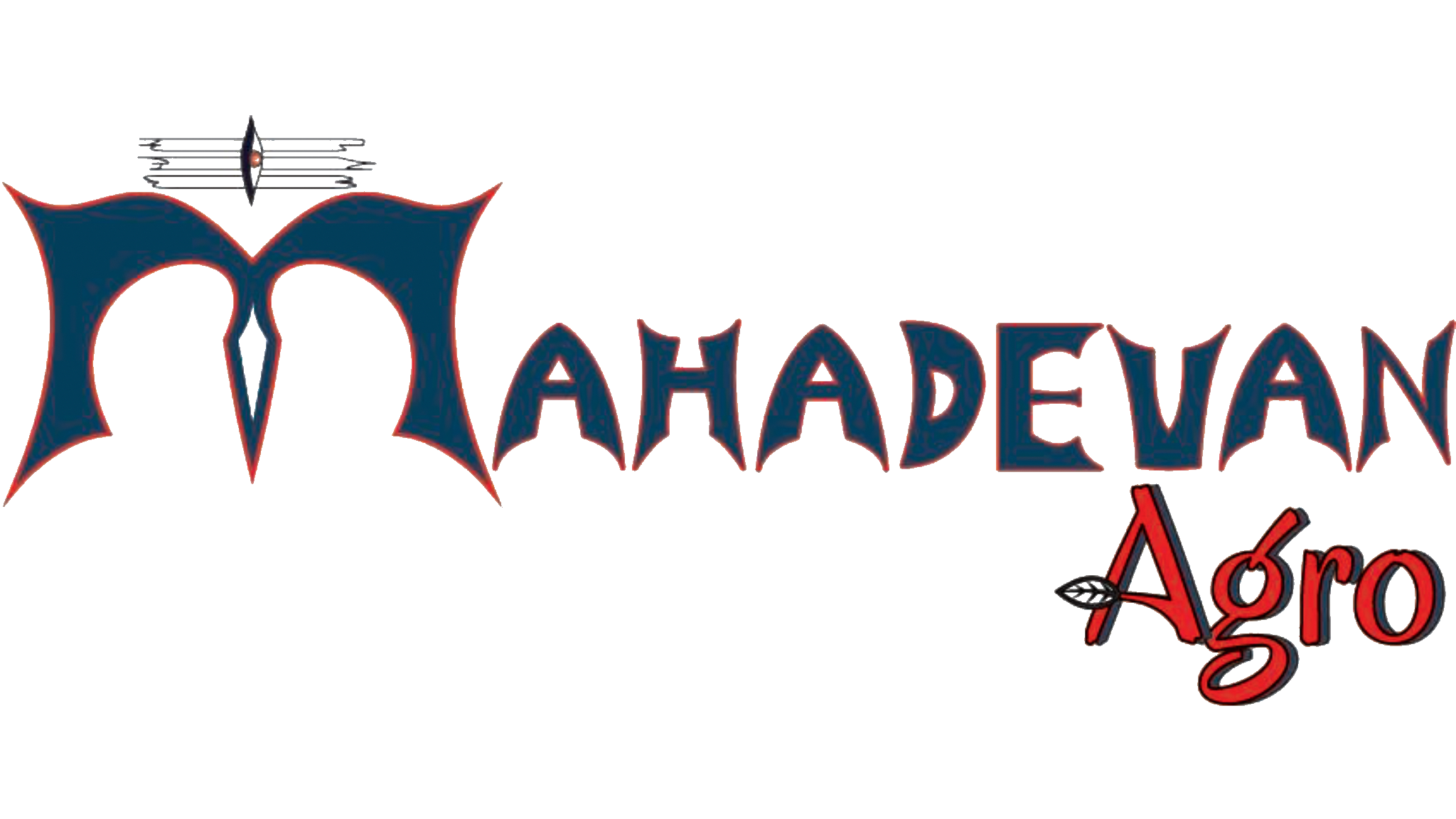




 FRUITS
FRUITS 